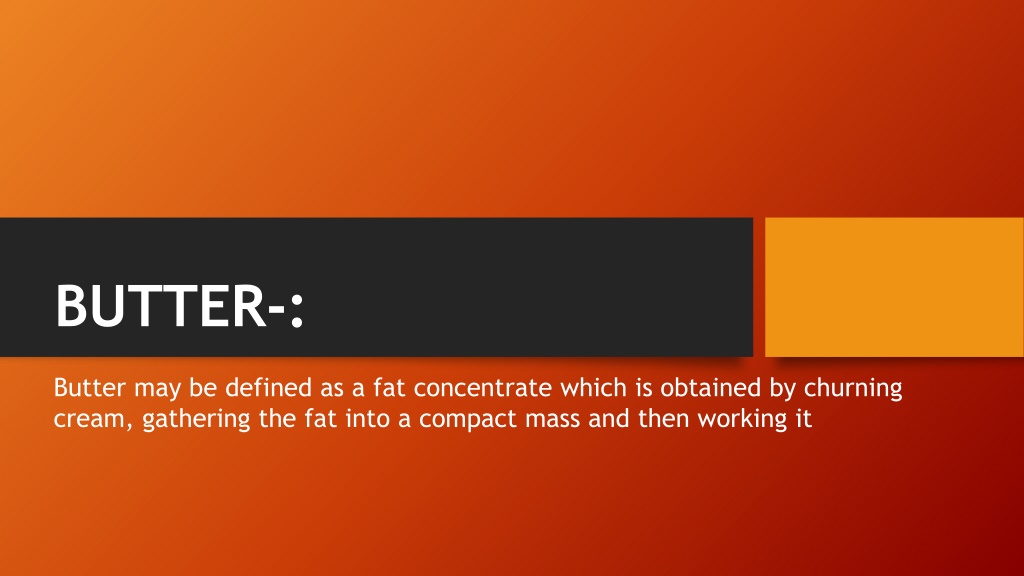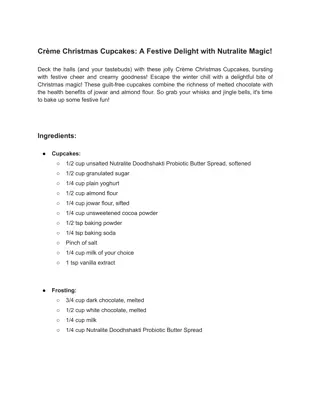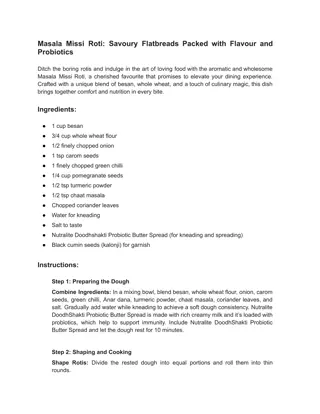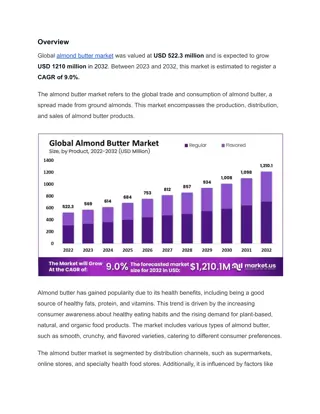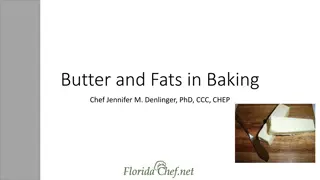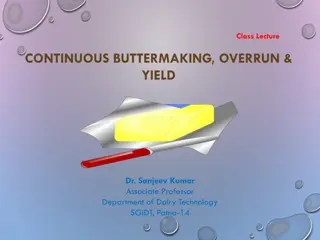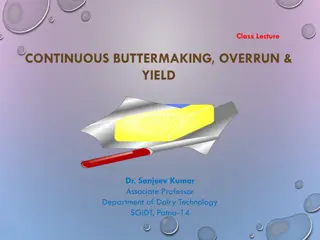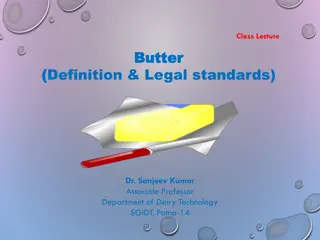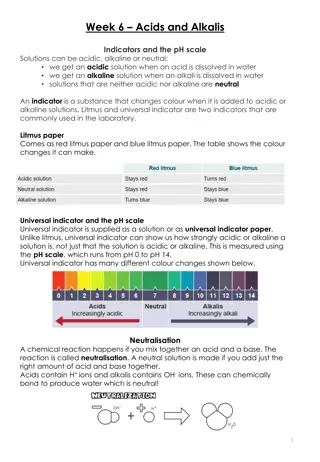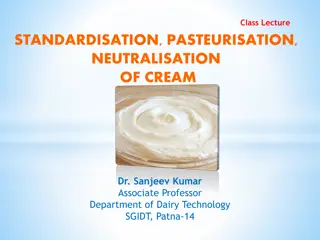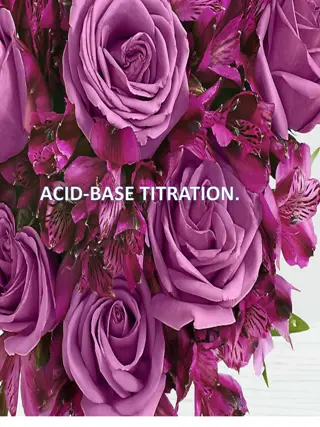Understanding Butter: Types, Classification, and Neutralization Process
Butter is a fat concentrate obtained by churning cream, with specific requirements as per regulations. It comes in various types such as pasteurized cream, ripened cream, salted, unsalted, sweet cream, and sour cream butter. The neutralization process involves reducing cream acidity using lime or soda Neutriluzer. Neutriluzers are added in suspension form and mixed thoroughly at a specific temperature. Different types of neutralization include single-stage and double-stage methods.
Download Presentation

Please find below an Image/Link to download the presentation.
The content on the website is provided AS IS for your information and personal use only. It may not be sold, licensed, or shared on other websites without obtaining consent from the author. Download presentation by click this link. If you encounter any issues during the download, it is possible that the publisher has removed the file from their server.
E N D
Presentation Transcript
BUTTER-: Butter may be defined as a fat concentrate which is obtained by churning cream, gathering the fat into a compact mass and then working it
According to the PFA RULES , butter is the product obtained from cow or buffalo milk or a combination thereof , or from cream or curd obtained from cow or buffalo milk or a combination thereof , with or without the addition of common salt and annatto or carotene as colouring matter. It must contain not less than 80 percent by weight of milk fat, not more than 1.5 percent by weight of curd and not more than 3 percent by weight of common salt. Diacetyl may be added as a flavouring agent but,if so used , the total dicetyl content must not exceed 4 ppm.
CLASSIFICATION OF BUTTER Pasteurized cream butter Made usually from pasteurized sweet cream .Such usually has a milder flavour than that made from similar cream not pasteurized. Ripened cream butter Made from cream in which a pleasant delicate aroma has been developed before churning by ripening Unripened cream butter Made from unripened cream. The flavour of such butter is usually mild. Salted butter Butter to which salt has been added. Unsalted butter Contains no added salt. Sweet cream butter In this case, acidity of the churned cream does not exceed 0.20 percent. Sour cream butter Made from cream which has more than 0.20 percent acidity.
NEUTRALISATION -: It s a process done to reduce the acidity of cream. It is partial reduction of acidity of cream to avoid excessive fat loss in buttermilk TYPES OF NEUTRALISATION - : 1. LIME NEUTRILUZER - : in this lime or calcium compunds are used for neutralisation process. 2. Soda Neutriluzer - : in this sodium hydroxide, sodium carbonate are used to Neutrilise the butter.
Neutriluzer are firstly added in suspension form and after addition the mixture is thoroughly mixed. The temperature while mixing neutriluzers must be around 29 C 32 C. TYPES OF NEUTRALISATION - : 1. Single stage neutralisation - : in this either lime is used or soda is used to Neutrilise the butter. 2. Double stage neutralisation - : in this first lime is added ro to lower the acidity to 0.30- 0.40. Then further soda is added to lower the remaining acidity
